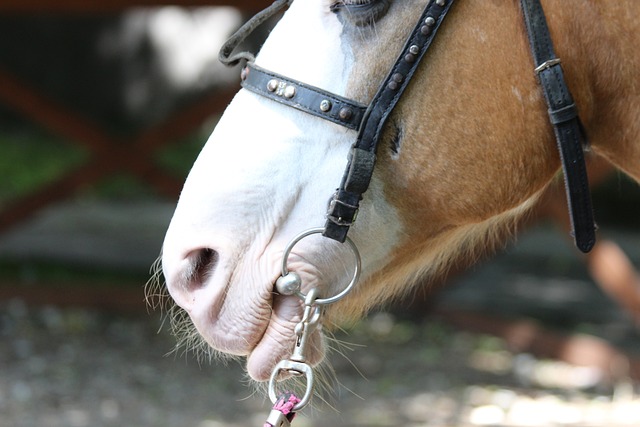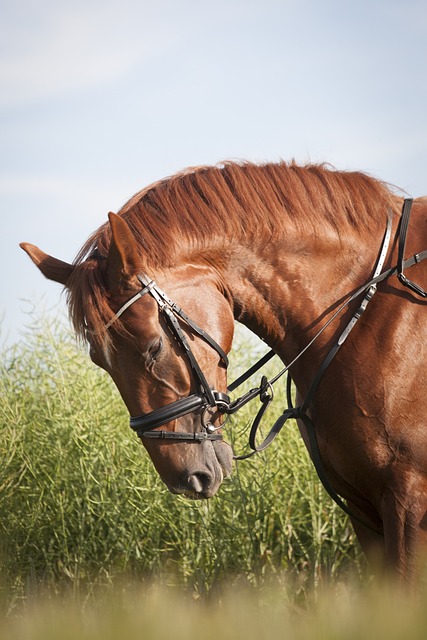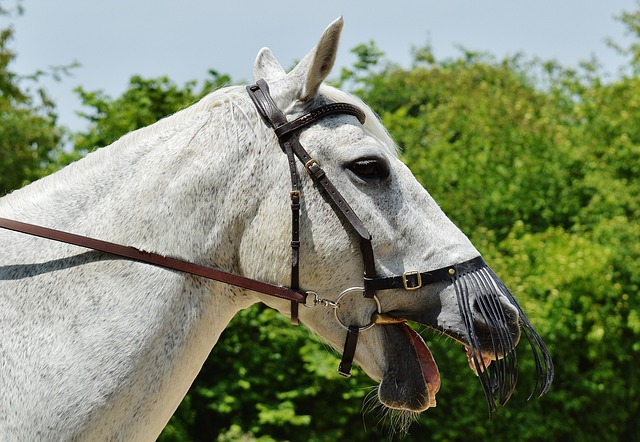
Breastplates
April 16, 2023
Bits
April 16, 2023There are several types of bridles commonly used for horses. Each type of bridle is designed to suit specific purposes and provide different levels of control for the rider. Here are the most common types of bridles and their uses:
- Snaffle Bridle: The snaffle bridle is the most common type of bridle used for horses. It consists of a headstall, bit, and reins. The bit is a simple design, usually made of a single jointed mouthpiece, and applies direct pressure to the horse’s mouth. It is commonly used for basic riding, schooling, and dressage.
- Double Bridle: The double bridle, also known as a full bridle, is used for advanced dressage and showing. It consists of two bits – a snaffle and a curb bit – and two sets of reins. The snaffle bit provides direct pressure to the horse’s mouth, while the curb bit applies pressure to the horse’s poll and chin groove. The double bridle provides the rider with a high level of control over the horse’s head and neck.
- Western Bridle: The western bridle is typically used for western-style riding and is often decorated with silver or other ornaments. It has a headstall, bit, and reins, but the bit is usually a thicker and heavier design than the snaffle bit used in English-style riding. Western bridles can also include a noseband and throatlatch.
- Bitless Bridle: The bitless bridle is designed for horses that do not tolerate bits well or for riders who prefer not to use a bit. It consists of a headstall, reins, and a noseband that applies pressure to the horse’s nose rather than its mouth. Bitless bridles come in a variety of designs, including hackamores and sidepulls.
- Racing Bridle: The racing bridle is designed for use in horse racing and is lightweight and minimalistic. It consists of a headstall, bit, and reins, and the bit is typically a simple jointed snaffle bit. The racing bridle is designed to provide the rider with maximum control over the horse while minimizing weight and interference with the horse’s movement.
- Driving Bridle: The driving bridle is designed for use in driving horses and consists of a headstall, bit, and reins. The bit is typically a simple snaffle bit, and the bridle may also include blinkers or other attachments to keep the horse focused on its job. Driving bridles can be used for pleasure driving or for competitive driving events.
In summary, there are several types of bridles designed for different purposes, including basic riding, dressage, western-style riding, bitless riding, racing, and driving. Each type of bridle provides the rider with different levels of control over the horse’s head and neck, and riders should choose a bridle that suits their riding style and their horse’s needs.
Checking your horse’s bridle for proper fit and condition is important for several reasons:
- Comfort of the horse: A bridle that does not fit properly can cause discomfort and pain to your horse, which can result in resistance, reluctance to work, and even injury. A poorly fitting bridle can rub or pinch the horse’s skin, cause pressure points, and affect the horse’s ability to breathe comfortably.
- Communication between horse and rider: A well-fitting bridle is crucial for clear communication between horse and rider. If the bridle is too loose or too tight, the rider may not be able to communicate effectively with the horse, which can lead to confusion, miscommunication, and potentially dangerous situations.
- Safety: A bridle that is worn or damaged can break or fail, which can be dangerous for both the horse and the rider. Checking your bridle for signs of wear and tear, such as frayed leather, broken stitching, or rusted buckles, can help prevent accidents and keep you and your horse safe.
- Performance: A bridle that fits properly can help your horse perform better. A well-fitting bridle allows the horse to move freely and comfortably, which can improve its balance, responsiveness, and willingness to work.
To ensure your horse’s bridle is in good condition and fits properly, it is important to regularly inspect it before each ride. Check the fit of the headstall, noseband, bit, and reins, and look for signs of wear and damage. Replace any worn or damaged parts and adjust the fit as needed to ensure your horse is comfortable, safe, and able to perform at its best.




